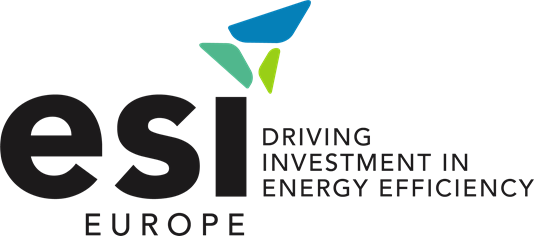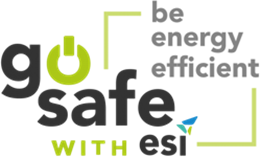EUROPEAN PROJECTS ➤ HORIZON 2020 ➤ESI Europe 2.0
“Energy Savings Insurance Europe 2.0 ”

| Project duration | 01/09/2021 – 31/08/2024 |
| Budget CRES Budget |
1 485 893.00€ |
| Website | www.gosafe-esi.com |
In September 2021, the Basel Agency for Sustainable Energy (BASE) Switzerland, DOOR, CRES, and SIEA launched a three-year project aimed at rolling out the successful Energy Savings Insurance (ESI) Model in Croatia, Greece, and Slovakia. The ESI Europe 2.0 project has received funding from the European Union’s Horizon 2020 research and innovation programme.
The ESI model aims to scale up investments in energy efficiency (EE), facilitate the flow of financing for relevant technology solutions and address the large untapped market potential. The ESI model targets small and medium-sized enterprises (SMEs) and creates the conditions for them to upgrade specific old inefficient technologies to new EE technologies.
The ESI Europe 2.0 projects builds on and expands the ESI Europe project being rolled out in Italy, Portugal and Spain. The ESI model has previously been successfully implemented in Colombia and Mexico, and is also being developed or planned in ten other countries in Latin America, and Asia. The ESI model was recognised by the Global Innovation Lab for Climate Finance as one of the most promising instruments to mobilise private sector investments in energy efficiency. ESI also features in the G20 Energy Efficiency Investment Toolkit and in the Swiss Sustainable Finance compendium of instruments for Financing the Low-Carbon Economy.
GoSafe with ESI: the Energy Savings Insurance model
Energy consumption constitutes a substantial proportion of production costs for many SMEs, particularly in energy-intensive sectors that rely on electricity or heating and cooling for their processes and service operations. Investments in new efficient technologies present attractive returns – often generating cash savings that allow the investors to recover their investment in a reasonable period of time, while also improving productivity, competitiveness and reducing emissions. However, these investments are not happening at a rate needed for the achievement of the climate and energy efficiency goals.

There are barriers that inhibit enterprises from
investing in EE, especially in SMEs, which represent
the vast majority of enterprises. These barriers include:
- Lack of trust between the different actors.
- EE not usually being an investment priority.
- Lack of stable and accessible financing instruments.
- Lack of experience with financing EE.
The ESI model comprises financial and non-financial elements designed to work together to overcome the described barriers, create trust and credibility among key actors, reduce the perceived risk of stakeholders. The elements are bundled together under the brand GoSafe with ESI, created by the ESI Europe project.
The ESI model consists of four main components as well as supporting activities:
|
Standardised Contract: Standardised and simplified contracts offer a clear and transparent framework for negotiations between key actors (SMEs and technology providers) on how the projects energy savings are guaranteed. This reduces the risks involved in energy efficiency projects, distributes the remaining risk to appropriate actors, and fosters trust among them. |
|
Insurance: A risk coverage product provided by a third party to insure against the provider failing to fulfil its contractual obligations regarding the energy savings. The insurance creates trust between the SME and the technology provider, and can also reduce the credit risk of the SME. |
|
Technical Validation: A technical validation process is integrated into the project, to overcome the perceived high performance risk of energy efficiency upgrades. An independent validation entity evaluates the capacity of the project to deliver the promised energy savings, verifies the installation, and acts as an arbitrator if required. |
|
Financing: A financing structure is set up by linking existing financial instruments to enable EE projects, using the ESI model / GoSafe with ESI solution. Competitive credit conditions, suitable tenors and support to access collateral can help SMEs in financing these technology solutions. The FIs benefit from the ESI model by mobilising green finance in aligning with EU Green Deal. |
Supporting activities: The project also includes supporting activities, starting with a market assessment and followed by communication, promotion and marketing activities, capacity building for key market stakeholders, and support to build initial pipelines of EE projects using GoSafe with ESI. A Management Information System (MIS) developed in blockchain is also included to facilitate the communication and exchange of documentation of GoSafe with ESI projects between clients, TPs, the validation entity, and insurance companies and FIs.
Dissemination across Europe and development of long-lasting training tools: The project also involves dissemination efforts to promote the model more broadly across Europe, and the development of long lasting training tools, such as an ESI Europe Toolkit and video, and building an ESI Europe Alliance.
Project Consortium Partners
Basel Agency for Sustainable Energy – coordinator: Established in 2001, BASE is a Swiss non-profit foundation and Specialized Partner of United Nations Environment. Around the world, BASE develops innovative ideas and tailored market-driven solutions to drive investment in sustainable energy and to meet the challenge of climate change. BASE conceptualised the ESI model together with the Inter-American Development Bank, which has been and is being implemented in various countries in Latin America, and also leads the implementation of ESI Europe in Italy, Portugal and Spain: www.energy-base.org
DOOR, Croatia: DOOR (Society for Sustainable Development Design) is a civil society organisation founded in 2003. DOOR’s mission is the promotion of sustainable development principles in all segments of society, at the local, regional and national level, primarily in the field of energy. DOOR’s vision is a society competent in the sustainable energy field, in which the public takes part in delivering, monitoring and evaluating public policies, and energy plays an important role in social, economic and ecological development and decreasing poverty. DOOR has implemented more than 80 projects, funded either by the European Union or other donors and has extensive competencies, knowledge and experience in EE and stakeholder involvement and cooperation: www.door.hr
CRES: CRES (Centre for Renewable Energy Sources and Saving), founded in September 1987, is a public entity supervised by the Ministry for Environment and Energy and is active in the fields of Renewable Energy Sources (RE) and Energy Efficiency (EE). Its primary aim is to promote technological applications in the RE/EE fields both at a national and international level. During the 30 years of its operation, it has participated in more than 1000 projects funded either by the EC or the Greek Government. CRES is in close contact and cooperation with the industry and SMEs, providing technical assistance in improving EE, performing energy audits, measurements and certification of products and supporting their involvement in EU and nationally funded programmes aiming at the implementation of energy cross cutting technology in the sector: www.cres.gr
SIEA, Slovakia: SIEA (Slovak Innovation and Energy agency) was established in 1999 as a professional allowance agency directed by the Ministry of Economy. It is the centre of competence for energy efficiency, energy innovations and renewable energies. SIEA also acts as implementation agency for Structural Funds. SIEA acts as the national energy agency and knows deeply the Slovak energy market and its participants, the decision makers, companies, professionals, associations and all those who are involved in energy and energy efficiency. The main areas of experience are the energy planning, ranging from energy audits up to regional and state conceptions, the development of legal framework, monitoring of energy efficiency, the transfer and promotion of energy efficiency solutions via networking with the major stakeholders: www.siea.sk




